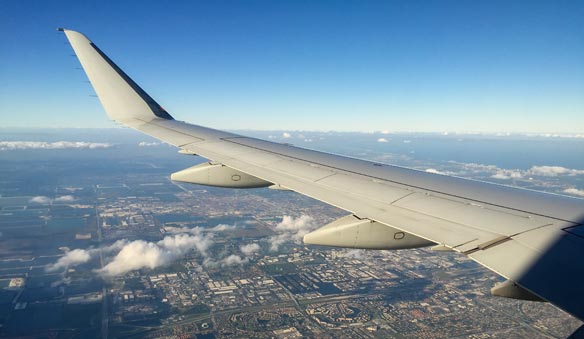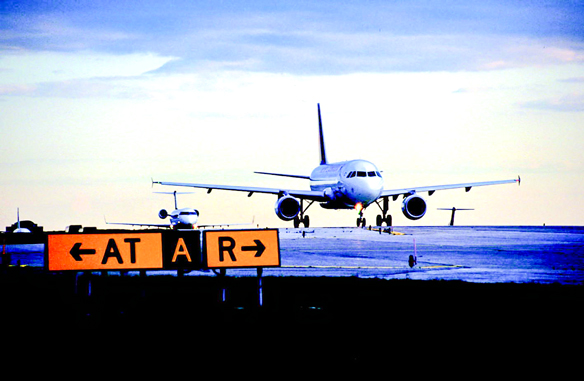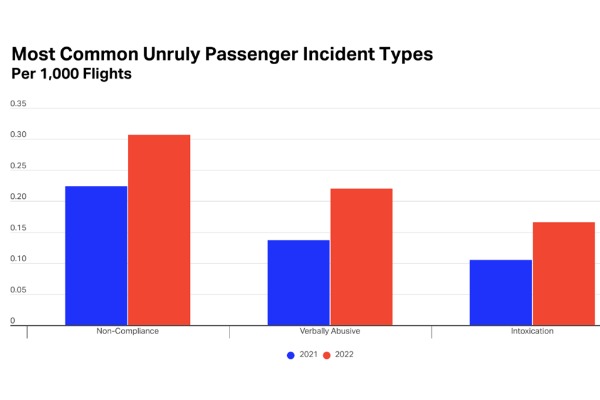IATA AGM Takes Aim At Key Issues

IATA has unveiled a series of roadmaps aimed at providing step-by-step detailing of critical actions and dependencies for aviation to achieve net zero carbon emissions by 2050.
The roadmaps address aircraft technology, energy infrastructure, operations, finance, and policy considerations leading to net zero.
With the adoption of a Long Term Aspirational Goal (LTAG) at ICAO’s 41st Assembly, governments and industry are aligned to reach the same net zero CO2 emissions goal by 2050. As policy initiatives lay the foundation on which many of the needed innovations and actions will rest, these roadmaps will be a critical reference point for policy makers.

Willie Walsh, IATA’s Director General, explained that: “The roadmaps are the first detailed assessment of the key steps necessary to accelerate the transition to net zero by 2050. Together, they show a clear direction and will evolve as we dig deeper to set interim milestones on the way to net zero. I must emphasize that the roadmaps are not just for airlines.”
Walsh continued: “Governments, suppliers, and financiers cannot be spectators in aviation’s decarbonization journey. They have skin in the game. The roadmaps are a call to action for all aviation’s stakeholders to deliver the tools needed to make this fundamental transformation of aviation a success with policies and products fit for a net-zero world.”
The roadmaps were not developed in isolation. A peer-to-peer review, complemented by a modeling tool provided by the Air Transportation Systems Laboratory at University College London (UCL), was conducted to calculate emission reductions for each technology.
Highlights of each roadmap include:
- Aircraft Technology: the development of more efficient aircraft and engines. Particularly important are the steps needed to enable aircraft powered by 100% sustainable aviation fuel (SAF), hydrogen or batteries. All development milestones are backed-up by announced investment and demonstrator programs. Also included are new engines, aerodynamics, aircraft structures, and flight systems.
- Energy and New Fuels Infrastructure: the focus is on the fuels and new energy carrier infrastructure upstream from airports needed to facilitate the use of aircraft powered by SAF or hydrogen. Renewable energy plays a vital role in meeting the aviation sector’s energy demand, and the roadmap outlines milestones to enable the necessary infrastructure developments.
- Operations: the opportunities for reducing emissions and improving energy efficiency by improving the way existing aircraft are operated. Automation, big data management, and the integration of new technologies are key enablers for optimizing air traffic management and enhancing the overall efficiency of the air transportation system.
- Policy: the need for globally aligned strategic policies to provide incentives and support for the aviation industry’s transition to a net-zero future. As with all other successful energy transitions, collaboration between governments and industry stakeholders is crucial in creating the necessary framework to achieve the decarbonization goals.
- Finance: how to finance the cumulative $5 trillion needed for aviation to achieve net zero by 2050. This includes technological advancements, infrastructure developments, and operational improvements.
The challenges to ramp up SAF production are a good illustration of the importance of these roadmaps. As a drop-in solution, SAF is expected to deliver about 62% of carbon mitigation needed to achieve net zero by 2050. But even though SAF is expected to be fully implementable with future aircraft fleet, it still has major inter-dependencies on policy, aircraft technology, energy infrastructure, financing, and operations for which these roadmaps are critical.
Marie Owens Thomsen, SVP Sustainability and Chief Economist at IATA, said: “The roadmaps show where all stakeholders should focus their efforts. There are two certainties. By 2050 we need to be at net zero carbon emissions. And the steps to get there that are outlined in these roadmaps will evolve as the industry’s expertise grows. Policy is particularly important early on as it, to a large extent, sets the scene for private sector investors to move. With that, the private sector can decarbonize at scale and with speed.”
Owens Thomsen pointed out that: “Without the right policy incentives and bold investments, many of the technologies and innovations simply won’t happen at scale. Everything is related, and that is why we have the five roadmaps to tie all the parallel elements together and give our stakeholders, including governments, a complete understanding of everything that needs to happen.”
Prof. Andreas Schafer, Director of UCL’s Air Transport Systems Laboratory, said: “Time is of the essence, as highlighted by these roadmaps. Immediate action is required to commercialize scalable zero-carbon energy storage solutions along with the required infrastructure, and to build a business case for their rapid delivery at Gigawatt scale.”
Blocked Funds Raise Concerns
IATA is warning that rapidly rising levels of blocked funds are a threat to airline connectivity in the affected markets. The industry’s blocked funds have increased by 47% to $2.27 billion in April 2023 from $1.55 billion in April 2022.
Walsh said that: “Airlines cannot continue to offer services in markets where they are unable to repatriate the revenues arising from their commercial activities in those markets. Governments need to work with industry to resolve this situation so airlines can continue to provide the connectivity that is vital to driving economic activity and job creation.”

The top five countries account for 68.0% of blocked funds and these include:
- Nigeria ($812.2 million)
- Bangladesh ($214.1 million)
- Algeria ($196.3 million)
- Pakistan ($188.2 million)
- Lebanon ($141.2 million)
IATA urged governments to abide by international agreements and treaty obligations to enable airlines to repatriate these funds arising from the sale of tickets, cargo space, and other activities.
Unruly Passenger Incidents Increased In 2022
The incidents of unruly passengers increased in 2022 (compared to 2021) according to a new analysis by IATA.
Latest figures show that there was one unruly incident reported for every 568 flights in 2022, up from one per 835 flights in 2021. The most common categorizations of incidents in 2022 were non-compliance, verbal abuse and intoxication. Physical abuse incidents remain very rare, but these had an alarming increase of 61% over 2021, occurring once every 17,200 flights.
Conrad Clifford, IATA’s Deputy Director General, said that: “The increasing trend of unruly passenger incidents is worrying. Passengers and crew are entitled to a safe and hassle-free experience on board. For that, passengers must comply with crew instructions. While our professional crews are well trained to manage unruly passenger scenarios, it is unacceptable that rules in place for everyone’s safety are disobeyed by a small but persistent minority of passengers. There is no excuse for not following the instructions of the crew.”

Although non-compliance incidents initially fell after the mask mandates were removed on most flights, the frequency began to rise again throughout 2022 and ended the year some 37% up on 2021.
The most common examples of non-compliance were:
- Smoking of cigarettes, e-cigarettes, vapes and puff devices in the cabin or lavatories
- Failure to fasten seatbelts when instructed
- Exceeding the carry-on baggage allowance or failing to store baggage when required
- Consumption of own alcohol on board
Two-pillar strategy
A two-pillar strategy is in place for the needed zero-tolerance approach to unruly behavior.
- Regulation: Ensure governments have the necessary legal authority to prosecute unruly passengers, regardless of their state of origin and to have a range of enforcement measures that reflect the severity of the incident. Such powers exist in the Montreal Protocol 2014 (MP14), and IATA is urging all states to ratify this as soon as possible. To date, some 45 nations comprising 33% of international passenger traffic have ratified MP14.
- Guidance to prevent and de-escalate incidents: Prevent incidents through collaboration with industry partners on the ground (such as airports, bars and restaurants and duty-free shops), including for example awareness campaigns on the consequences of unruly behaviour. Additionally, sharing best practices, including training, for crew to de-escalate incidents when they occur. A new guidance document was published at the beginning of 2022 gathering best practices for airlines and providing practical solutions to governments on public awareness, spot fines, and fixing jurisdiction gaps.
Said Clifford: “In the face of rising unruly incident numbers, governments and the industry are taking more serious measures to prevent unruly passenger incidents. States are ratifying MP14 and reviewing enforcement measures, sending a clear message of deterrence by showing that they are ready to prosecute unruly behaviour. For the industry’s part, there is greater collaboration. For example, as the vast majority of intoxication incidents occur from alcohol consumed prior to the flight, the support of airport bars and restaurants to ensure the responsible consumption of alcohol is particularly important.”
And he concluded: “No one wants to stop people having a good time when they go on holiday—but we all have a responsibility to behave with respect for other passengers and the crew. For the sake of the majority, we make no apology for seeking to crack down on the bad behaviour of a tiny number of travellers who can make a flight very uncomfortable for everyone else.”


